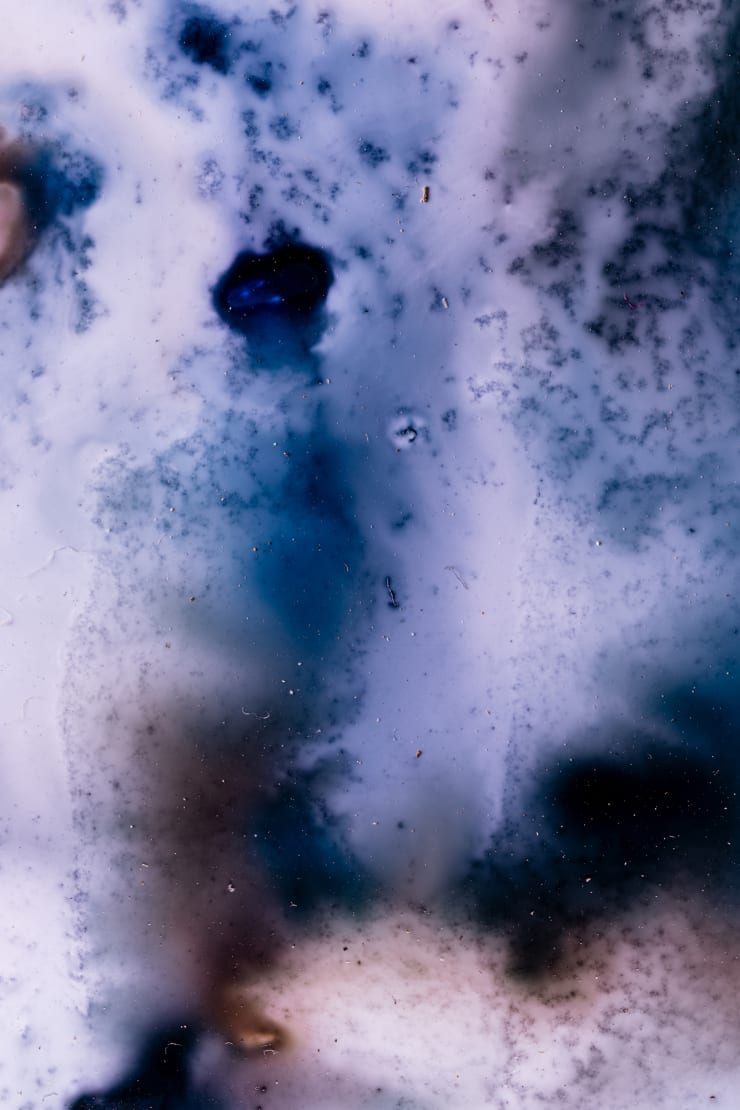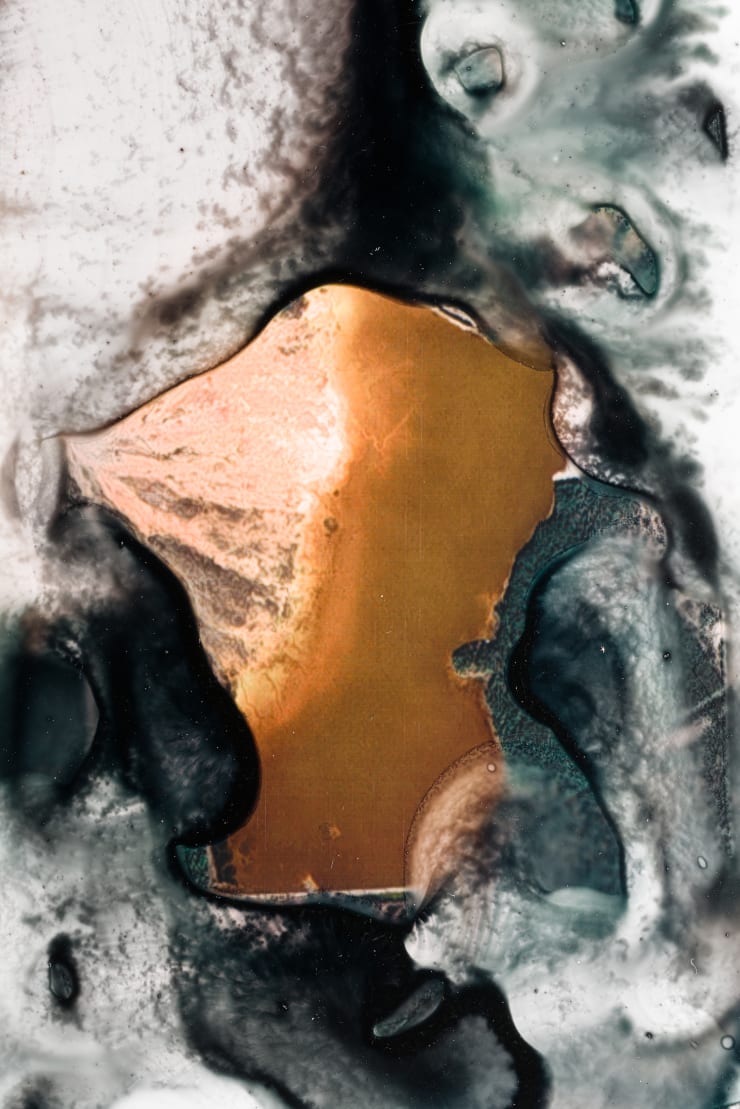-

-
TARQ is delighted to present Philippe Calia’s show Lēthē opening on April 7th 2022 for Art Night Thursday. In this show the artist employs photochemigrams, cyanotypes, and video to explore the materiality of our digital memory. Lēthē is a nod to the mythical River of Lethe, where all those who drank from it experienced complete forgetfulness. Reappraising this myth, Calia evokes the fluidity of memory and its possible residues, notably through the repeated gesture of diluting through chemicals various types of photographic prints. The exhibition is structured around two memories from his childhood: the first one depicts a factory sending out plumes of steam, leading him to believe that this was in fact, how clouds were made. Playing on the motif of the natural cloud, Calia examines the infrastructure and materials required to create our contemporary, seemingly invisible, yet undeniably factory produced digital cloud.
-

-

-
The metallic and cyanotype prints presented here are based on satellite views of mining sites containing minerals essential to the formation of digital infrastructure. More specifically, it focuses on tailing ponds, where the waste generated from the extraction process of the ore is left behind. Calia’s usage of pre-existing imagery is a response to the overabundance of images in our current environment. His preoccupation with converting the digital cloud to an analogue format was not an intuitive jump, but rather a dedicated effort to de-mystify its otherwise ethereal network resulting in a body of work that colourfully overlays the material on the digital, the dust on the pixel. In his video piece, Calia eventually juxtaposes a family photograph from the 1970s with several of his own photographs which he took on the same location decades later, as a framework to speculate on the entropy of memories.
-

-

-
"At a certain point, they stopped making images. Not all of them, and not that it was an absolute refusal, but an unexpected malaise set in, which cut through the enthusiasm for new routines. Yet, it was also a time of images. Confined, they saw long lines of despair on the streets through the lenses of others. It was as if there was nothing more to say, and often conversations moved in imperfect circles, trying to touch the edges and surfaces of things but never quite covering the distance. The closest they came is when someone recovering from silence said we are destroying the world in order to preserve it. That seemed true enough but there were things to do, and the afternoons were interminable. Through one such haze, he had a dream in which he was younger, and in the midst of autumn, burning a negative in front of a window he had never stood in front of. The feeling of having experienced a transformation elongated itself into the evening and confused him. He had indeed performed this ritual years ago, but in passing from one side to the other lost faith, failing to mark the event in his journal and forgetting all the insignificant and useful details of that day. Experiencing it once again through displacement, he felt the memory had finally entered him and that only sublimation allowed immaculate remembering. The idea aroused curiosity among others in the way that one seeks to observe from a remove the passions and preoccupations of an artist. And it gave the entire enterprise the appearance of alchemy, his own impossible quest for immortality through the transmutation of material. " - An excerpt from Zeenat Nagree's fictional short story from the exhibition catalogue.
Click here to read the complete catalogue essay
-
About the Artist
Philippe Calia is an artist, photographer and filmmaker, living for the past 16 years between India and France. Informed by an academic background in political science and anthropology, his practice currently engages with objects and institutions of memory, such as the family album or the museum. Often maneuvering at the intersection of the still and moving image, as well as figuration and abstraction, his work incorporates discarded documents and mundane visual material through gestures of quotation, collage or erasure. Manners of perceiving, preserving and commemorating are always central to his approach.
His involvement in the visual arts also manifests through editorial and educational endeavours. Since 2013, he has been collaborating with PIX as a photo editor. Between 2015 and 2020, he co-managed BIND, a platform for photography which ran a public photobook library.Lēthē at TARQ, Mumbai (2022) will be Philippe’s first solo show. His group exhibitions include Unsealed Chamberat Romain Roland Gallery, New Delhi (2021); India Contemporary Photography: confinement at UP Gallery, Hsinchu City (2021); Indian Cities in Photography at ENSA Paris-Malaquais, Paris (2018); Abandon at 24 Jor Bagh, New Delhi (2015) and Light Sensitive at P3 Gallery, London (2010). He has also participated in festivals like the Singapore International Photography Festival, Singapore (2020); Influences Indiennes, France (2018); Delhi Photo Festival, India (2013) and the Belfast Photography Festival, Northern Ireland (2012).
His work has been featured in publications such as The New Yorker, Le Monde, Art India and The Indian Quarterly.
Philippe is currently based in Bangalore.
Lēthē: Philippe Calia
Current viewing_room
















